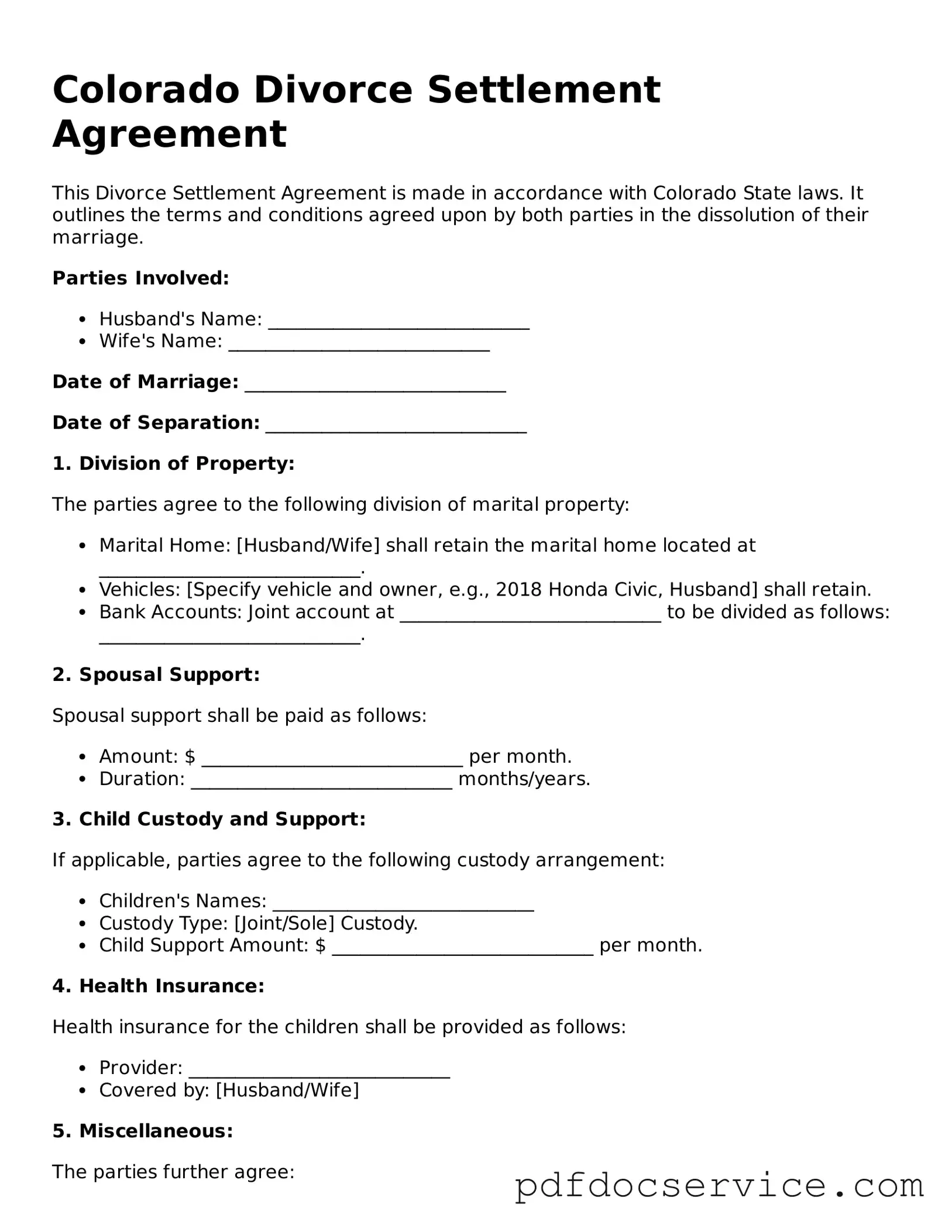Printable Divorce Settlement Agreement Template for Colorado
The Colorado Divorce Settlement Agreement form is a legal document that outlines the terms of a divorce between two parties. It covers important aspects such as asset division, child custody, and support arrangements. Completing this form is essential for ensuring a smooth and fair divorce process in Colorado.
Open Divorce Settlement Agreement Editor
